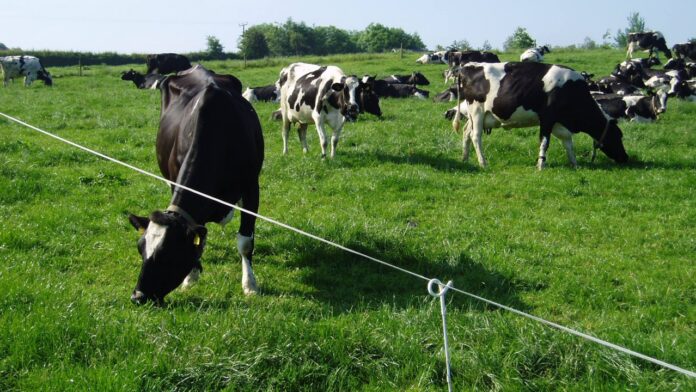Autumn Grazing Management
In this article, CAFRE’s Richard Gibson provides some autumn grazing management tips for dairy farmers.
The focus of autumn grazing management is to increase the number of days at grass and set the farm up, during the final rotation, to grow grass over winter and provide grass the following spring.
While grass quality is lower during autumn, it still has a role in reducing feed and housing costs.
The rotation length should be 30 days for mid-September and pushed to 35 days from October 1st.
On October 1st, 2022, if you have 100 cows grazing 35 hectares on the milking platform, to have a 35-day rotation, allow the herd 1.0 hectare/day.
If this does not provide enough grass, then supplement with silage and additional concentrate.
The average farm cover will vary depending on the farm location. However, it needs to be approximately 2,700 kg DM/hectare for October 1st, 2022.
As a general guideline, start closing paddocks from October 1st, 2022. Ensure paddocks are grazed tight to encourage tillering over the winter months.
During this last rotation, focus on grazing residuals if you want to have top-quality swards for your milking herd next spring.
Calculate your forage requirements
Estimate the tonnage of silage available on your farm and compare this with the likely winter demand.
Start by measuring the length and width of the pit and the average depth of silage.
After consulting your silage analysis, use the below table to multiply by the correct conversion factor to calculate the total tonnes of fresh weight silage.
| Table 1: Conversion factors to convert silage volume to tonnes of silage | |
| Silage dry matter (%) | Tonnes of silage/cubic metre |
| 20 | Multiply by 0.77 |
| 25 | Multiply by 0.68 |
| 30 | Multiply by 0.60 |
For example, assuming the DM of the silage is 25 per cent multiply the volume of the silage pit by 0.68.
Next, establish the forage demand of the herd. Use the estimated feed requirements in table 2 for all livestock on your farm.
Multiply the number of each type of stock by the number of months to be fed by the monthly silage requirement.
For example, 80 cows in-milk, fed for seven months, require 784 tonnes (80 cows x 7 months x 1.4 tonnes per month).
| Table 2: Estimated monthly feed requirement of stock eating 25 per cent dry matter silage | |
| Livestock | Silage (tonnes/month) |
| Dairy cow in milk | 1.4 |
| Dry cow | 0.9 |
| 0-1 year heifer | 0.6 |
| 1–2 year heifer | 0.9 |
Get your silage analysed
Get your silage analysed so you know its potential feed value (M+). This allows you to make decisions on the level of concentrates needed.
Table 3 shows the difference in concentrate needed to feed a cow in early lactation fed average and good quality silage.
| Table 3: Feed requirement for 32 kg of milk | ||
| Average silage | Good silage | |
| Silage ME (MJ/kg DM) | 10.8 | 11.8 |
| Silage dry matter (%) | 28.1 | 28.1 |
| Silage fresh weight intake (kg) | 40 | 43 |
| M+ (kg of milk daily) | M+8 | M+12 |
| Daily concentrate required (kg) | 11 | 9 |
Group cows as follows to achieve good feed efficiency:
- Group 1 – highest yielding/early lactation group (cows giving more than 28 kg milk or less than 150 days in milk).
- Group 2 – lowest yielding/late lactation group (cows giving less than 28 kg milk or more than 150 days in milk).
Lowest-yielding group
Set the amount of concentrates fed per cow in the wagon to suit the lowest-yielding cow in the group.
The lowest-yielding group does not always need blend in the wagon if parlour feeding is also taking place.
Good quality (M+12) silage and up to 7.0 kg daily of parlour feed allows cows with yields of 28 kg of milk to be managed satisfactorily without extra concentrates in the wagon.
The same silage requires 7.0 kg of concentrates in the wagon to support a base production of 28 kg in the high-yield group, with cows yielding more than 28 kg of milk being topped up in the milking parlour.
It is important cows in late lactation are not over-fed, to make the most efficient use of concentrates this winter.
Other news articles on That’s Farming:
‘ASF virus can survive on clothes, boots, wheels, and other materials’





